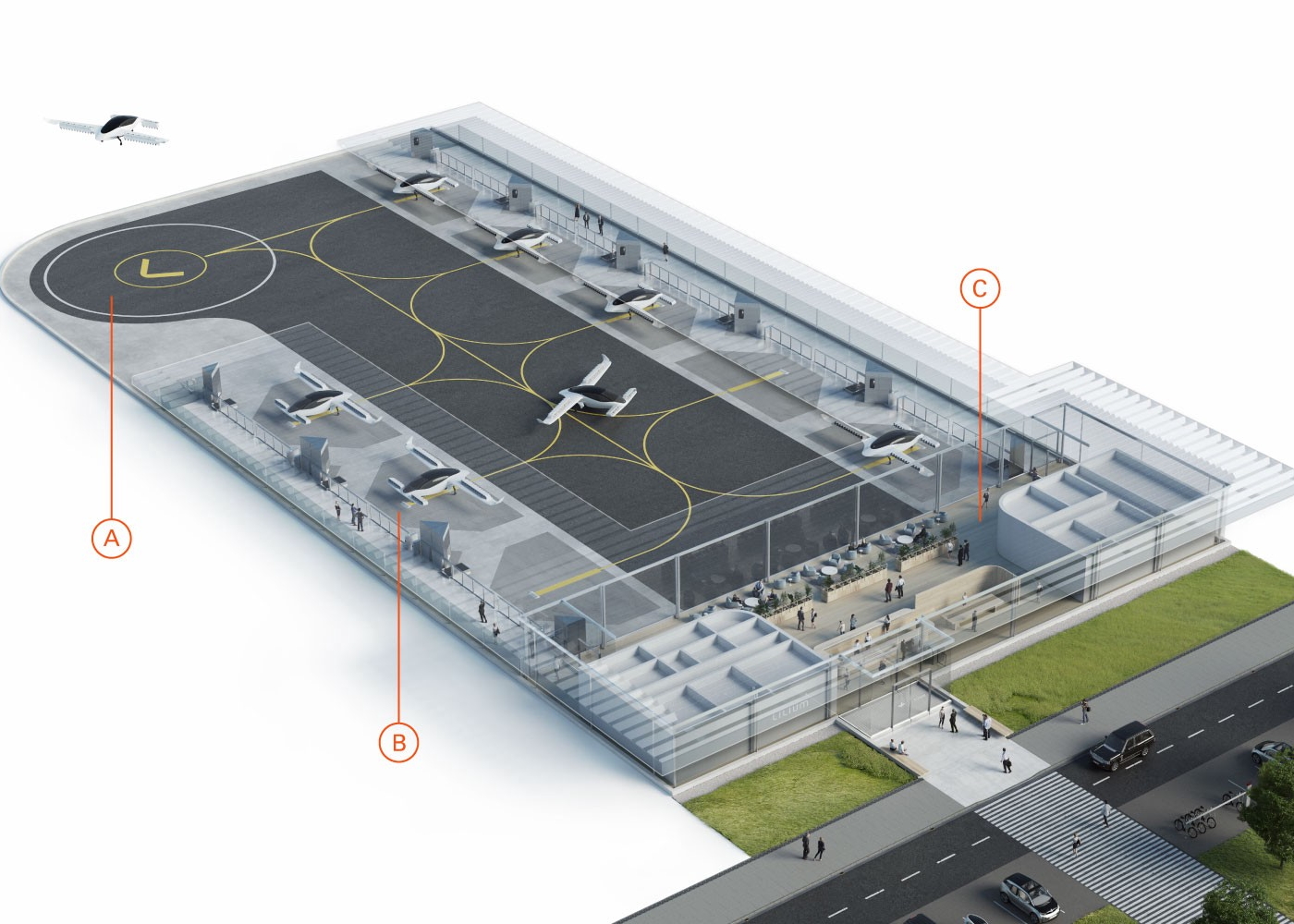Did you know SHIFT is taking the stage this fall? Together with an amazing line-up of experts, we will explore the future of mobility during TNW Conference 2021. Secure your ticket now!
This month, we took a step closer to the next wave of air mobility with UK start-up Urban-Air Port announcing a partnership with the Urban Air Mobility (UAM) Division of Hyundai. They’re developing the blueprint and foundations for a fully operational urban airport (aka vertiport) called Air-One, which is launching in 2022.
Air-One will be the world’s first vertiport to meet the future demand for autonomous drones and electric vertical take-off and landing (eVTOL) passenger vehicles.
Its location is Coventry, UK. The company chose the site as the city is a historic hub for the automobile and aerospace industry, with a pool of people and skills that can support the future R&D and advanced manufacturing industries. The location also provides easy access nationwide, with 90% of the UK population within four hours of travel time.
Urban-Air Port plans to plug the infrastructure gap with more than 200 electric air mobility hubs worldwide to meet expected global demand in the next five years.
It’s an ambitious project which highlights the significant infrastructural challenges to resolve before we’ll see eVTOL aircraft available commercially.
Vertiport infrastructure is lagging
Unsurprisingly, a lack of infrastructure for eVTOL aircraft is a barrier to the commercial viability of the next big thing in air transport. Only 3% of air mobility investment so far this year (a mere $150m) is in physical infrastructure.
So, how are we going to depart and disembark?
There are two different approaches to vertiports:
1) Adapting infrastructures such as airports, heliports, and parking garage roofs.
2) Building dedicated spaces such as Air-One.
In June, Joby Aviation announced an agreement with REEF and Neighborhood Property Group (NPG) to allow Joby to access REEF’s existing network of parking garages in key cities, including Los Angeles, Miami, New York, and San Francisco.
The company has a large network of over 4,800 parking garages, covering 70% of North America’s urban population. Archer Aviation has struck a similar deal with REEF.
Additionally, Vertiports need to comply with minimum requirements, which are still in development between the US Federal Aviation Authority (FAA), aircraft manufacturers, and other industry stakeholders.
What will vertiports look like?


Most companies have their own design ideas. Last July Lilium announced their idea of vertiports based around modular designs suitable for placing a vertiport at an existing transport terminal, next to a shopping center, on top of a busy car park, or alongside a suburban residential development.
Manufacturers can prefabricate the modules off-site, reducing costs and allowing for rapid on-site construction.
The challenges of creating aircraft vertiport
There is a range of logistical and safety issues. These include:
Numbers: How many aircraft fit into the vertiport approach and take-off area (FATO)? Most companies are aiming for a large fleet that departs with mere minutes between take-offs and landings. This requires a lot of parking bays for aircraft and a place for eVTOL aircraft to recharge.
Safety: How will passengers embark and disembark safely? For example, under current FAA regulations, helicopters currently need to be 60 meters apart because of downwash and rotor/engine hazards. This will be an even bigger challenge for large numbers of eVTOL aircraft.
Passenger processing: Also tied into safety is passenger processing. Uber Elevate proposes a turnaround time of five minutes in between departing passengers and the next vertiport take-off. It is logistically questionable. Think about the time it takes to get off a plane, get on a bus, and arrive at the terminal, for instance.
Security: What type of screening will take place before passengers board?
Battery charging times: Aircraft need somewhere to recharge at the vertiport. Recharging varies per model and could take anything from 20 minutes to one hour. Currently, there’s no interoperability between batteries used by different eVTOL aircraft.
Standardization: Different kinds of eVTOLs are in different sizes and configurations. This makes vertiport standardization impossible.
eVTOLs are coming, but they’ll only be able to take flight with the right infrastructure. Until vertiports are in place, their technology is stagnating, and their wings and rotors are clipped.
Do EVs excite your electrons? Do ebikes get your wheels spinning? Do self-driving cars get you all charged up?
Then you need the weekly SHIFT newsletter in your life. Click here to sign up.